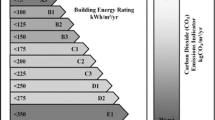Abstract
Fundamental assumptions behind qualitative modelling are critically considered and some inherent problems in that modelling approach are outlined. The problems outlined are due to the assumption that a sufficient set of symbols representing the fundamental features of the physical world exists. That assumption causes serious problems when modelling continuous systems. An alternative for intelligent system building for cases not suitable for qualitative modelling is proposed. The proposed alternative combines neural networks and quantitative modelling.
Similar content being viewed by others
References
Ahonen, J.J. and Saarenmaa, H. (1991). Model-based reasoning about natural ecosystems: an algorithm to reduce the computational burden associated with simulating multiple biological agents. InProc 6th Symposium on Computer Science for Environmental Protection. pp. 193–200.
Clacey, W.J. (1992). Model construction operators.Artificial Intelligence, 53. pp. 1–115.
de Kleer, J. (1993). A view on qualitative physics.Artificial Intelligence, 59. pp. 105–114.
Fishwick, P.A. (1992). An integrated approach to system modelling using a synthesis of artificial intelligence, software engineering and simulation methodologies.ACM Transactions on Modelling and Computer Simulation, 2. pp. 307–330.
Futo, I. and Gregley, T. (1990).Artificial intelligence in simulation. Ellis Horwood, Chichester.
Hayes, P.J. (1979). The naive physics manifesto. In Michie, D. (ed.).Expert Systems in the Micro-electronic Age. Edinburgh University Press, Edinburgh.
Kuipers, B.J. (1993a). Reasoning with qualitative models.Artificial Intelligence, 59. pp. 125–132.
Kuipers, B.J. (1993b). Qualitative simulation then and now.Artificial Intelligence, 59. pp. 133–140.
Kuipers, B.J. (1985) The limits of qualitative simulation.In Proc of International Joint Conference on Artificial Intelligence. pp. 128–136.
Lewis, T.G. and Smith, B.J. (1979).Computer Principles of Modelling and Simulation. Houghton Miffin, Boston.
Miller, D.P., Firby, R.J., Fishwick, P.A., Franke, D.W. and Rothenberg, J. (1992). AI: What simulationists really need to know.ACM Transactions on Modelling and Computer Simulation, 2. pp. 269–284.
Newell, A. and Simon, H. (1981). Computer science as empirical inquiry: symbols and search. Reprinted in: Haugeland, J. (ed.).Mind Design. MIT Press, Cambridge.
Saarenmaa, H., Kaila, E., Nuutinen, T. and Kolstrom, T. (1991). Operational forest management planning with logic programming. In:Current Advances in the Use of Computers in Forest Research — Proc of the IUFRO Workshop February 11, 1991. Bulletins of the FFRI Vol 395, pp. 61–68.
Sachs, E. (1987). Piecewise linear reasoning. In:Proc of AAAI-87. Seattle, Washington. pp. 655–659.
Salmon, W.C. (1984).Scientific explanation and the causal structure of the world. Princeton University Press, Princeton.
Sayre, K.M. (1965).Recognition: a study in the philosophy of artificial intelligence. University of Notre Dame Press, Notre Dame (Indiana).
Thompson, J.R. (1989).Empirical model building. John Wiley & Sons, New York.
Weld, D.S. and de Kleer, J. (eds.) (1990).Qualitative reasoning about physical systems. Morgan Kaufmann Publishers, San Mateo, California.
Widman, L.E. and Loparo, K.A. (1989). Artificial intelligence, simulation and modelling: a critical survey. In: Widman, Loparo and Nielsen (op cit).
Widman, L.E., Loparo, K.A. and Nielsen, N.R. (1989)Artificial Intelligence, simulation and modelling. John WIley & Sons, New York.
Wittgenstein, L. (1971).Tractatus Logico-Philosophicus (Finnish translation). WSOY, Keuruu.
Zeigler, B.P. (1976).Theory of Modelling and Simulation. Wiley, New York.
Author information
Authors and Affiliations
Corresponding author
Rights and permissions
About this article
Cite this article
Ahonen, J.J. On qualitative modelling. AI & Soc 8, 17–28 (1994). https://doi.org/10.1007/BF02065175
Issue Date:
DOI: https://doi.org/10.1007/BF02065175




